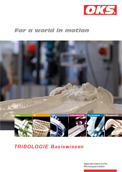Corrosion Protection for reliable preservation during storage and shipping
Corrosion is the reaction of a metal with its environment, which changes its properties and impairs the functionality of the component. OKS corrosion protection products are specially designed to provide optimal protection of machine parts with bare metal surfaces for storage and shipping .


